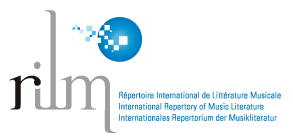Paz, Schoenberg, and <i>Abel</i>: an Examination of the Paths they Took Towards Atonality Based Statistical Features of Music.
Keywords:
Juan Carlos Paz, Arnold Schoenberg, tonality, atonalityAbstract
The links between Juan Carlos Paz and Arnold Schoenberg are well-known, and strong. However, the way in which Paz left tonality behind has only partially been documented, and the relationships among his path towards atonality and that of Schoenberg, his reference point, are even less understood. The purpose of this work was to clarify these issues by focusing on voice-leading, particularly on the level of dispersal in the voice, and by comparing how the composers moved towards atonality through this parameter. In order to achieve this purpose, we analyzed the way in which intervals are distributed and organized in the vocal line of their songs. Results suggest that, within the framework of their songs, the Paz and Schoenberg approached atonality in a rather different fashion: Paz based melodic structure on lower levels of pitch dispersal (i.e., a larger amount of small intervals) and adhered to tonal rules of voiceleading more than Schoenberg did.
Downloads
Published
Issue
Section
License
ATTRIBUTION-NONCOMMERCIAL 4.0 INTERNATIONAL
https://creativecommons.org/licenses/by-nc/4.0/
You are free to:
- Share — copy and redistribute the material in any medium or format
- Adapt — remix, transform, and build upon the material
- The licensor cannot revoke these freedoms as long as you follow the license terms.
Under the following terms:
- Attribution — You must give appropriate credit , provide a link to the license, and indicate if changes were made . You may do so in any reasonable manner, but not in any way that suggests the licensor endorses you or your use.
- NonCommercial — You may not use the material for commercial purposes .
- No additional restrictions — You may not apply legal terms or technological measures that legally restrict others from doing anything the license permits.
Notices:
You do not have to comply with the license for elements of the material in the public domain or where your use is permitted by an applicable exception or limitation .
No warranties are given. The license may not give you all of the permissions necessary for your intended use. For example, other rights such as publicity, privacy, or moral rightsmay limit how you use the material.







